Steps to Take & What to Expect When Weaning From a PPI
If you’re someone who suffers from persistent, constant acid reflux, you probably take a PPI. Furthermore, if you’re like most acid reflux sufferers, your doctor also probably hasn’t told you how bad they can be for you. However, weaning off them can be quite difficult. In this blog, we’re going to discuss the following questions: how do I wean off of omeprazole, how long does PPI withdrawal last, and which medications are PPIs? Let’s jump in and get you some answers.
Which Medications Are PPIs?
Before we get much further, let’s first address which medications are PPIs. If you are taking any of the following drugs, you are taking a proton pump inhibitor (PPI) and will need to wean off of it slowly in order to minimize “PPI withdrawal.”
“Omeprazole (Prilosec, Prilosec OTC, Zegerid)
Esomeprazole (Nexium, Nexium 24HR)
Lansoprazole (Prevacid, Prevacid 24HR)
Dexlansoprazole (Dexilant)
Pantoprazole (Protonix)
Rabeprazole (AcipHex)
Esomeprazole/ Naproxen (Vimovo)”
Source: drugwatch.com
What Do PPI Medications Do?
So that you can understand why weaning is necessary, let’s briefly touch on how PPIs work in the body.
Proton pump inhibitors (PPIs) work by suppressing the production of acid in your stomach’s lining – and that’s all it does. PPIs do not help your lower esophageal sphincter (LES) stay closed. In fact, PPIs can often mask further damage due to stomach enzymes – regurgitation could still be happening, you just can’t feel it.
So, when you quit your PPI cold turkey, those acid-producing cells are suddenly no longer suppressed and they “rebound” full-force, along with the undesirable symptoms of withdrawal. Going off your omeprazole or other PPI will result in withdrawal. You should expect this, even when weaning.
How Long Does PPI Withdrawal Last?
If you quit cold turkey, you can expect your withdrawal symptoms to last anywhere from one to three months. That’s right – months. This is because those acid-producing cells are going to need to re-regulate themselves, and that takes time.
What Does PPI Withdrawal Look Like?
The most notable symptom of PPI withdrawal will be “acid surges,” moments of acid reflux that seem to come on for no reason. You may also have more reflux at night, including regurgitation and aspiration into the lungs. For these reasons, weaning is important (and will make you the most comfortable).
How Do I Wean off of Omeprazole & Other PPIs?
Now that we’ve laid the groundwork for you, let’s chat about how to actually do this. Remember that weaning off of your PPI is going to take time, but it’s going to take less time and will be less uncomfortable than quitting cold turkey. With weaning, you also reduce your risk for aspiration-related pneumonia and other complications that come with persistent heartburn. Furthermore, don’t forget about why you’re weaning off your PPI in the first place!
Note: The goal is to get you off of your PPI. Supplement with H2 blockers and antacids when necessary. During the weaning process, take your medication with your largest meal.
Start alternating between your full dose and a half dose every other day. For example, if you usually take two PPIs daily, cut back to one every other day. Do this for the first two weeks.
Reduce to that half dose daily. In our example, that would be one PPI per day. Continue this for two more weeks.
After this, judge how your body is responding. Some people can go off their PPI completely at this point. However, others may need to switch to a half dose every other day for a couple of weeks. If your heartburn has been stubborn throughout the whole process, go with half doses every other day for a while, then a half dose every three days. You can go as slowly as you need to.
Is Your Reflux Still Persistent After Weaning?
The team here at the Tampa Bay Reflux Center also wants you to know that, if your reflux persists after you quit your PPIs, we can help you get a permanent solution with surgery. Get in touch with us to learn more.
